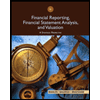
A.
Fixed assets:
Fixed assets are long lived economic resources which are owned by the company. Fixed asset accounts are increased by the debits and decreased by the credits. Thus, fixed asset accounts normally show debit balances (
Depreciation is permanent decreases in the monetary value of an asset over the time period due to use, wear and tear or obsolescence. It is the process of allocating (allocation concept) the cost of an asset to expense over its useful life. Depreciation expense is the amount of depreciation that is reported (expenses) on the income statement.
Accumulated depreciation refers to the amount of depreciation that is subtracted from the value of assets in the balance sheet over a period of time.
To determine: The book value of fixed asset.
B.
To indicate: Whether the book value of M Corporation’s fixed assets normally approximate their market value.
Want to see the full answer?
Check out a sample textbook solution
Chapter 3 Solutions
Bundle: Financial & Managerial Accounting, Loose-leaf Version, 14th + Working Papers For Warren/reeve/duchac's Corporate Financial Accounting, 14th + ... Financial & Managerial Accounting,
- Please provide the solution to this financial accounting question using proper accounting principles.arrow_forwardPlease explain the solution to this general accounting problem with accurate explanations.arrow_forwardDecker Processing Inc. placed 230,000gallons of direct materials into the refining process. At the end of the month, 12,500 gallons were still in process, 30% converted as to labor and factory overhead. All direct materials are placed in refining at the beginning of the process and conversion costs occur evenly during the process. Decker uses weighted-average costing. Determine the equivalent units in process for direct materials, assuming that 18,500 gallons were 30% complete prior to the addition of the 230,000 gallons.arrow_forward
- ??!!arrow_forwardWhat is the gross profit margin?arrow_forwardA company currently has $78 million in sales, $36 million in current assets, $62 million in fixed assets, and $24 million in accounts payable. The fixed assets are currently operated with full capacity and will change proportionally with the sales growth. Sales are projected to be $105 million, current assets are projected to be $45.3 million, and accounts payable are projected to be $29.5 million. What are fixed assets projected to be, given this information? Provide Accurate Answerarrow_forward
- I need help with this financial accounting question using standard accounting techniques.arrow_forwardPlease provide the solution to this general accounting question with accurate financial calculations.arrow_forwardI am looking for help with this general accounting question using proper accounting standards.arrow_forward
 Financial And Managerial AccountingAccountingISBN:9781337902663Author:WARREN, Carl S.Publisher:Cengage Learning,
Financial And Managerial AccountingAccountingISBN:9781337902663Author:WARREN, Carl S.Publisher:Cengage Learning, Cornerstones of Financial AccountingAccountingISBN:9781337690881Author:Jay Rich, Jeff JonesPublisher:Cengage Learning
Cornerstones of Financial AccountingAccountingISBN:9781337690881Author:Jay Rich, Jeff JonesPublisher:Cengage Learning Financial Reporting, Financial Statement Analysis...FinanceISBN:9781285190907Author:James M. Wahlen, Stephen P. Baginski, Mark BradshawPublisher:Cengage Learning
Financial Reporting, Financial Statement Analysis...FinanceISBN:9781285190907Author:James M. Wahlen, Stephen P. Baginski, Mark BradshawPublisher:Cengage Learning


